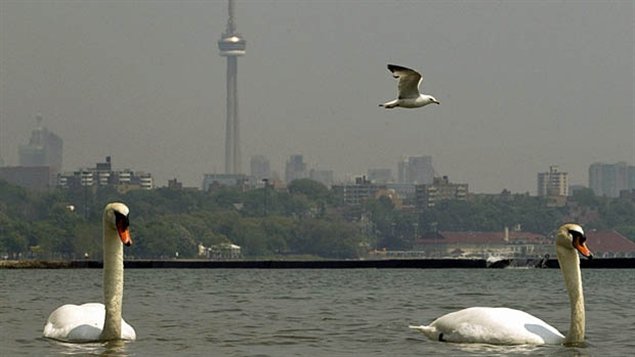Researchers at the University of Toronto have found traces of a powerful greenhouse gas in the lower atmosphere.
Angela Hong is PhD candidate in the Department of Chemistry at the University of Toronto. Under the guidance of Scott Mabury, she and the team made the discovery.
ListenThe research team’s report was published in Geophysical Research Letters, Nov 27.
What the U of T group found were trace amounts of perfluorotributylamine (PFTBA), a man-made chemical that does not otherwise exist in nature.
PFTBA has been in use since for several decades for various applications in electrical equipment, such as transistors and capacitors. The researchers said it was unclear how widespread its use was today.
It belongs to an entire class of chemicals used for industrial applications whose effects on the atmosphere remain unknown.
Because it is man-made with strong bonding it does not break down easily and could last up to 500 years in the atmosphere.
In meteorological terms, PFTBA has the highest potential to affect climate of all known chemicals to date, the researchers said.
The scientists say that because it is so long lasting, if compared with an equal amount of CO2, a well-known greenhouse gas, over a 100 year period, it is over 7-thousand times more potent.
The saving grace is that the sample taken near the University of Toronto shows only extremely minute traces of the chemical in the atmosphere.
The researchers hope that others will follow up on their research to determine the extent of PFTBA in the atmosphere over a much wider area, and whether amounts are increasing or decreasing.
There are currently no policies to regulate PFTBA use, especially in environmental or climate change terms. While only minute amounts of this chemical were detected its discovery in the atmosphere, and its potential to affect climate, leads to questions about many types of industrial chemicals which are produced but not regulated in any way in terms of emissions or climate policy.







For reasons beyond our control, and for an undetermined period of time, our comment section is now closed. However, our social networks remain open to your contributions.